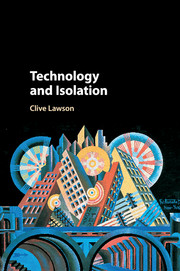Book contents
- Frontmatter
- Dedication
- Contents
- Preface
- Acknowledgements
- 1 Technology Questions
- 2 From Obscurity to Keyword: The Emergence of ‘Technology’
- 3 Ontology and Isolation
- 4 Science and Technology
- 5 The Sociality of Artefacts
- 6 Technological Artefacts
- 7 Technology and the Extension of Human Capabilities
- 8 Technology and Instrumentalisation
- 9 Technology and Autism
- 10 Technology, Recombination and Speed
- 11 Marx, Heidegger and Technological Neutrality
- Bibliography
- Index
4 - Science and Technology
Published online by Cambridge University Press: 14 April 2017
- Frontmatter
- Dedication
- Contents
- Preface
- Acknowledgements
- 1 Technology Questions
- 2 From Obscurity to Keyword: The Emergence of ‘Technology’
- 3 Ontology and Isolation
- 4 Science and Technology
- 5 The Sociality of Artefacts
- 6 Technological Artefacts
- 7 Technology and the Extension of Human Capabilities
- 8 Technology and Instrumentalisation
- 9 Technology and Autism
- 10 Technology, Recombination and Speed
- 11 Marx, Heidegger and Technological Neutrality
- Bibliography
- Index
Summary
The relationship between science and technology is often viewed in a rather simple and clear-cut manner: science and technology are relatively discrete, easily distinguishable activities, the latter being wholly dependent upon the former. The idea that technology can be understood as ‘applied science’, dominant not only in academic contributions concerned with the nature of technology but as found in more practical documents, such as course guides for the study of particular technologies, is perhaps the most common expression of such a view. As noted in Chapter 2, the term ‘applied science’ was also central to the discourse in which both scientists and engineers sought to establish their status within the academy and wider society, and so important for the coming into being of the term ‘technology’.
Conceptions of applied science, and the rather discrete separation between science and technology that they seem to imply, have been challenged in recent years by a variety of different contributors who call into question not only the starkness of the distinction but the direction of causation presupposed between technology and science. Although there is much of value in these criticisms, I shall argue for a somewhat different account of science and of the relationship between science and technology. In so doing, I seek to avoid the problems involved in holding a simple ‘applied science’ conception of technology, but also of conflating technology and science. Moreover, the account I want to propose also focuses attention on particular sources of similarity between technology and science which are rather different to those usually discussed, namely the special role occupied in each by the isolation of the causal properties of things.
Technology as Applied Science
Although the idea of applied science has a long history, it was not really formalised in a significant way until the contribution of Bunge (1966). Bunge suggests that the method and theories of science can be applied either to increasing the knowledge of reality or to enhancing our welfare and power: if the goal is purely cognitive, pure science is obtained; if primarily practical, applied science results (ibid., 329). Implicit in Bunge's position is the idea that technology results from science.
Information
- Type
- Chapter
- Information
- Technology and Isolation , pp. 52 - 61Publisher: Cambridge University PressPrint publication year: 2017
